Murray Valley Encephalitis
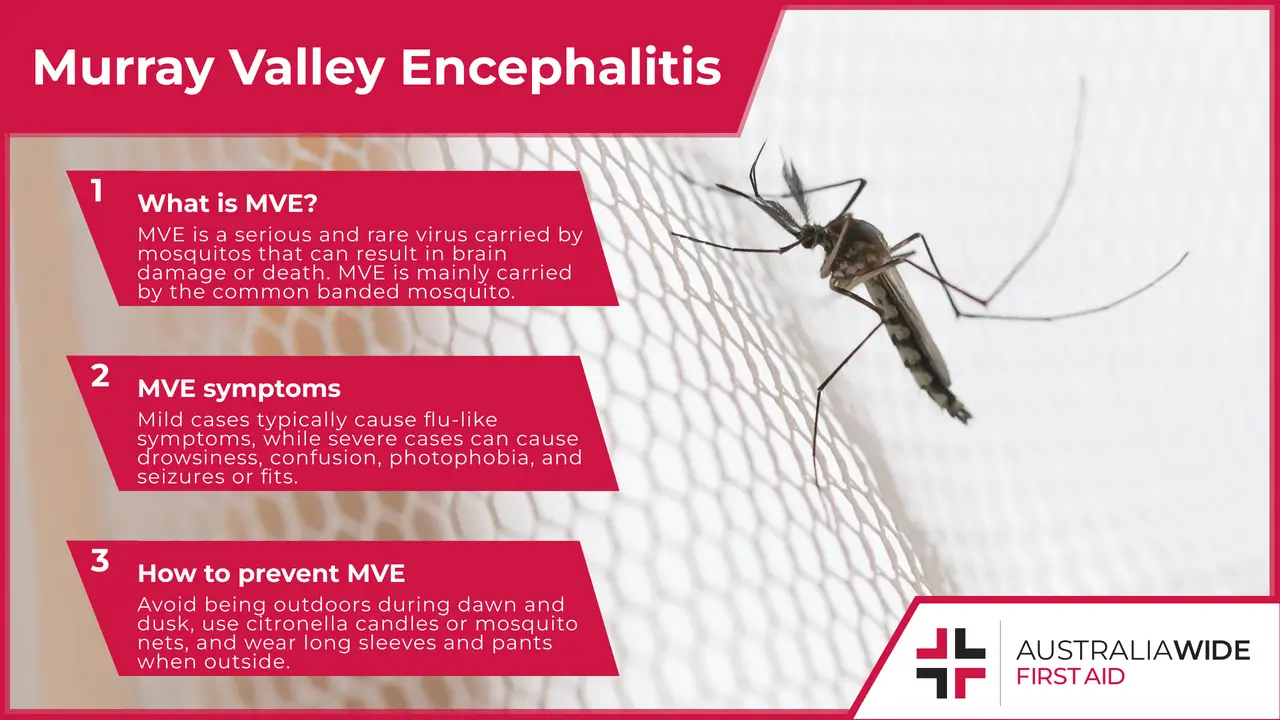

Murray Valley encephalitis is a serious and rare virus carried by mosquitos that can result in brain damage or death.
Less severe symptoms of Murray Valley encephalitis include fever, nausea and vomiting, headache and muscle aches. Most people who are infected with Murray Valley encephalitis virus may not show any symptoms. Murray Valley encephalitis becomes serious when viral encephalitis (swelling of the brain) occurs.
Symptoms of viral encephalitis include severe headaches, drowsiness, confusion, seizures and fits. It is important to seek immediate and urgent medical attention should any of these symptoms appear.
The best way to prevent infection by Murray Valley encephalitis is to protect yourself from mosquito bites. Read on for some simple, but effective ways of reducing mosquito bites as summer approaches.
The common banded mosquito (culex annulirostris) is the main species known to carry Murray Valley encephalitis. These mosquitos are found all over Australia and pick up the virus from feeding on water birds such as herons and egrets. To date, no human to human transmission is known.
Murray Valley encephalitis virus was first isolated in 1951 from patients who died from inflammation of the brain (encephalitis) in the Murray Valley in Victoria and South Australia.
Murray Valley encephalitis appears predominantly in the northern parts of Western Australia, Northern Territory, and Queensland, but extends inland and along coastal regions. An outbreak with a confirmed 17 cases of Murray Valley encephalitis in 2011 was associated with the significant flooding and the increased rainfall in Australia that year. Mosquitos that carry Murray Valley encephalitis are most active during dusk and dawn and love to breed in water.
Symptoms of Murray Valley encephalitis may appear anytime 5-28 days after infection, with cases generally appearing within the 7-12 day window:
Doctors use a blood test to diagnose a recent or past infection of Murray Valley encephalitis. A lumbar puncture (a sample of cerebrospinal fluid taken from your lower back) can be used on patients believed to have encephalitis.
There is no known cure or vaccine for Murray Valley encephalitis. The severity of Murray Valley encephalitis differs from case to case, and treatment and management is at a doctor's advice. Murray Valley encephalitis must be reported to the Australian health authorities (a “notifiable” disease). Infections should be monitored carefully.
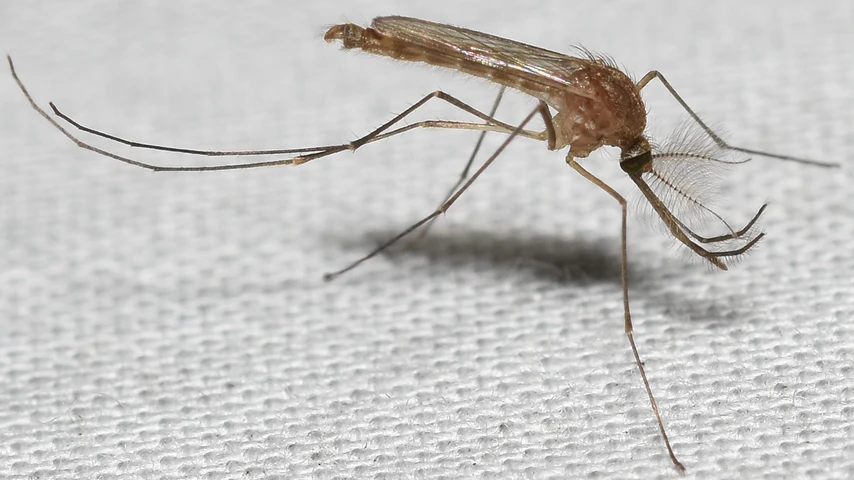
Murray Valley encephalitis virus is a mosquito-borne disease, (or a vector-borne disease) that is transferred to humans via mosquitos.
Mosquito-borne diseases kill more than a million people all over the world each year.
Mostly found in humid, wet, and warm tropical environments around the world, examples of more serious forms of mosquito-borne diseases are malaria, yellow fever, and dengue fever. Murray Valley encephalitis is one of the serious forms of a mosquito-borne virus.
In Australia, the prevalence of mosquito-borne diseases is growing due to more people living closer to mosquito breeding areas and periods of increased rainfall and climate change.
With the recent and continuing flooding around the country, mosquito-borne disease is becoming an increasingly important public safety concern, with councils all over the country implementing mosquito culling policies in order to curb the risk of disease.
As mosquito bites can be both uncomfortable and painful, they can also cause allergic reactions in the way of anaphylaxis. Preventing Murray Valley encephalitis means lowering your risk of a mosquito bite.
Here are some simple ways of protecting yourself and your home from mosquito-borne diseases such as Murray Valley encephalitis:
With these practical methods, you can mosquito-proof yourself and your home to enjoy the outdoors all summer long, even when the mozzies are feeding.
A mosquito bite is a red, itchy bump that appears when a mosquito punctures your skin in order to feed on your blood. Mosquitoes are attracted to the carbon dioxide that you exhale, as well as body heat and certain chemicals in your sweat. If you do get bitten by a mosquito, the best way to relieve the itch is to apply a cold compress or calamine lotion. You can also take an antihistamine to reduce swelling and itching. If you have a severe allergic reaction to a mosquito bite, you should seek immediate medical attention.
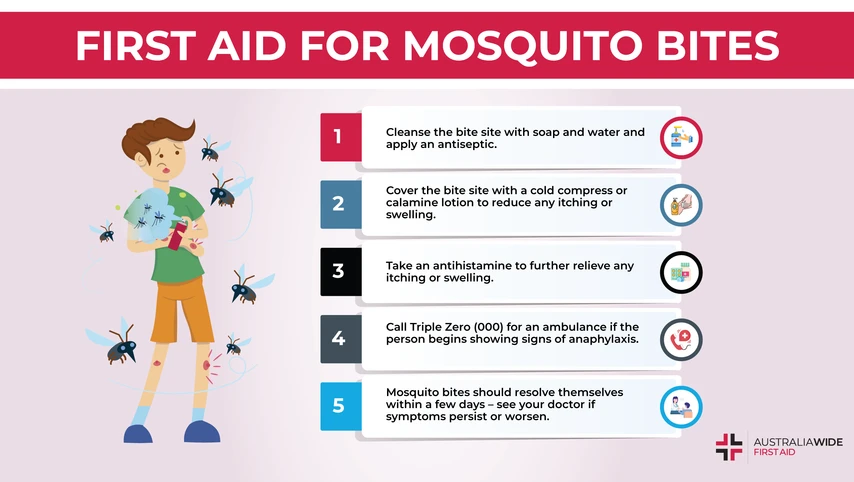
In an emergency, mosquito bite first aid consists of the following steps:
Murray Valley encephalitis is a mosquito-borne disease that can cause acute and severe illness with some cases resulting in brain damage or death.
Preventing mosquito bites is the best way to avoid being infected with Murray Valley encephalitis. Wearing long sleeves, using mosquito repellent, and keeping your home clear of any ideal mosquito breeding habitats (still standing water or debris in gutters) are simple but effective ways of preventing mosquito bites.
To learn more about mosquito bite first aid and mosquito-borne illnesses, book a first aid course with us today.
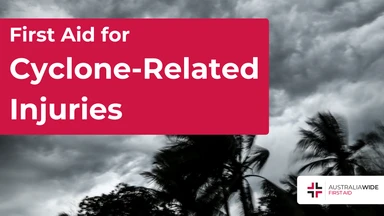
March 3, 2025
Injuries during cyclones often result from flying debris, collapsing structures, and flooding. Knowing basic first aid can help prevent further harm while waiting for emergency services.

March 3, 2025
If a cyclone makes landfall, meaning that it crosses from the sea onto land while still being strong enough to be classified as a cyclone, the damage it can cause can be disastrous. Preparation is key to minimising the risks associated with cyclones. The damaging weather can last for days, exacerbating risks as hazards intensify.
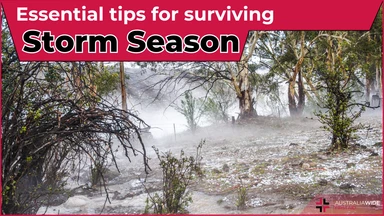
November 1, 2024
Severe storms are a common and dangerous occurrence in Australia, particularly in regions like Queensland. These storms can bring large hail, damaging winds, heavy rain, and occasionally tornadoes, all of which can put both people and property at risk. Preparing for and responding to severe storms effectively is key to ensuring safety.